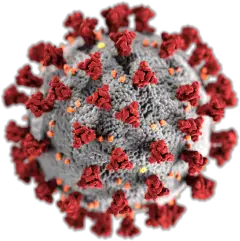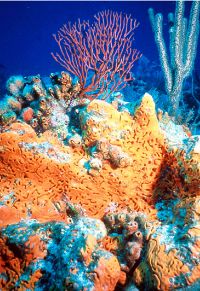Organism
| Life on Earth
| ||
|---|---|---|
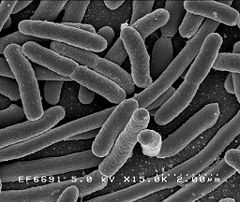 These Escherichia coli cells provide an example of a microorganism
| ||
| Scientific classification | ||
| ||
In biology and ecology, an organism (in Greek organon = instrument) is an organized, individual living system (such as animal, plant, fungus or microorganism).
There are two main classes of objects: non-living objects that are essentially inert and obey physical forces in a purely mechanical way (eg., water in oceans, sands in deserts) and living things (Luria et al. 1981). Individuals in the second group have the quality known as "life." This class of matter includes individuals with the capability of reproducing and producing new organisms that are more or less like themselves (Luria et al. 1981). The concept of organisms is one of the fundamental concepts in biology and is used as the basis for discussions of evolution, ecology, genetics, and so forth.
Most efforts to define organisms center definitions on physical aspects, such as the ability to reproduce, utilize energy, metabolize, and so forth. However, beyond the biological manifestations of organisms, some philosophical perspectives add that all living organisms possess an inner aspect or character that confers the quality of life. In addition, many religious views posit that humans represent a type of being that is qualitatively different than all other organisms in having an eternal spirit or soul.
Overview
Life
The concept of organisms is centered on the characteristic called "life." A difficult term to define, life is that quality or property that distinguishes living organisms from dead organisms and inanimate objects. Although universal consensus on a definition is lacking, biological properties common to the known organisms found on Earth (plants, animals, fungi, protists, archaea, and bacteria) are that they are carbon-and-water-based, are cellular with complex organization, use energy and undergo metabolism, possess a capacity to grow, maintain homeostasis, respond to stimuli, reproduce, and have various adaptations to the environment.
Not every definition of life considers all of these properties to be essential. For example, the capacity for descent with modification is often taken as the essential property of life. This definition notably includes viruses, which do not qualify under narrower definitions as they are acellular and do not metabolize. Broader definitions of life may also include theoretical non-carbon-based life.
Beyond the biological manifestations of matter, some philosophical perspectives, notably the Aristotelian theory of the soul and modern vitalism, add that living organisms possess an inner aspect or character that confers the quality of life (see Philosophical characteristic of life). They do not agree with modern biological mechanism that explains phenomena of life only in terms of external principles of chemistry and physics.
Characteristics of organisms
Organisms (prior to death) share many universal characteristics, including that they are composed of cells; pass on their heredity using a nearly universal genetic code; need energy from the environment to exist, grow, and reproduce; and maintain their internal environment; among others. These are the common set of characteristics identified by biologists that distinguish living organisms from nonliving things. Non-living entities may exhibit some of these characteristics, but not all of them.
- Cells. With the exception of viruses, all organisms consist of cells. A cell is the basic unit of life, being the smallest unit that can carry on all the processes of life, including maintenance, growth, and even self-repair.
- Carbon-based biochemistry. Living organisms are characterized by a common carbon-based biochemistry. All organisms pass on their heredity via the genetic material that is based upon nucleic acids, such as DNA, using a nearly universal genetic code. Every cell, no matter how simple or complex, utilizes nucleic acids for transmitting and storing the information needed for manufacturing proteins.
- Organization. Living organisms are organized at both the molecular and cellular levels. The energy and materials from the environment are organized, such as the internal structure of a cell, or the organization of multicellular organisms into tissues, organs, and systems. In essence, living organisms reverse entropy.
- Energy and metabolism. Every living being needs energy from the environment in order to exist, grow, and reproduce.
- Development and growth. Living things grow and develop as they age. This involves maintenance of a higher rate of synthesis than catalysis, with growth of the organism taking place through cell enlargement and cell division. A growing organism increases in size in all of its parts, rather than simply accumulating matter.
- Homeostasis: All living organisms, whether unicellular or multicellular, exhibit homeostasis. Homeostasis is the property of an open system to regulate its internal environment so as to maintain a stable condition.
- Response to stimuli. All living organisms respond to the environment.
- Adaptation. Living organisms have characteristics that give them a survival/reproductive advantage in an environment; that is, they have adaptations to the environment. Living organisms show variability in these adaptations, allowing the species to continue in a fluctuating or changing environment.
- Reproduction. Reproduction is the ability to produce new organisms. It is important to note that reproduction as a characteristic applies primarily at the level of species, so even though many individuals of any given species do not reproduce, possibly because they belong to specialized sterile castes (such as ant workers) or are sterile for other reasons, including age or disease, these are still considered forms of life.
In addition to the above, generally recognized biological characteristics, as noted above, some philosophers recognize another quality that comprises living organisms. This additional characteristic is an immaterial, inner aspect that distinguishes living organisms, such as plants and animals, from inanimate objects, such as atoms, molecules, and minerals. This quality or characteristic of "life" is an invisible, non-material force that underlies the physical, and Aristotle calls it the "soul" (psyche). (See Philosophical characteristic of life.)
Semantics
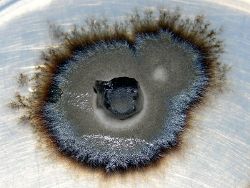
The word "organism" may broadly be defined as an assembly of molecules that influence each other in such a way that they function as a more or less stable whole and have properties of life. However, many sources, lexical and scientific, add conditions that are problematic to defining the word.
The Oxford English Dictionary (2004) defines an organism as "[an] individual animal, plant, or single-celled life form." This definition problematically excludes non-animal and plant multi-cellular life forms such as some fungi and protista. Less controversially, perhaps, it excludes viruses and theoretically-possible man-made non-organic life forms.
Luria et al. (1981) define organism as an "individual member of a species of living beings." This is problematic because species itself is difficult to define, and there are many diverse definitions.
The word "organism" usually describes an independent collections of systems (for example circulatory, digestive, or reproductive) themselves collections of organs; these are, in turn, collections of tissues, which are themselves made of cells.
The concept of an organism can be challenged on grounds that organisms themselves are never truly independent of an ecosystem; groups or populations of organisms function in an ecosystem in a manner not unlike the function of multicellular tissues in an organism. When organisms enter into strict symbiosis, they are not independent in any sense that could not also be conferred upon an organ or a tissue. Symbiotic plant and algae relationships do consist of radically different DNA structures between contrasting groups of tissues, sufficient to recognize their reproductive independence. However, in a similar way, an organ within an "organism" (say, a stomach) can have an independent and complex interdependent relationship to separate whole organisms, or groups of organisms (a population of viruses, or bacteria), without which the organ's stable function would transform or cease. Other organs within that system (say, the ribcage) might be affected only indirectly by such an arrangement, much the same way species' affect one another indirectly in an ecosystem. Thus, the boundaries of the organism are nearly always disputable, and all living matter exists within larger heterarchical systems of life, made of wide varieties of transient living and dead tissues, and functioning in complex and dynamic relationships to one another.
Basic groups
Two main groups of organisms can be distinguished: unicellular and multicellular. Some simple life forms, such as the paramecium, consist of a single cell throughout their life cycle and are called unicellular organisms. Multicellular organisms, such as a whale or tree, may have trillions of cells, and have differentiated cells that perform specialized functions. The phrase complex organism describes any organism with more than one cell.
Another main distinction is between the prokaryotes and eukaryotes. The gap between prokaryotes and eukaryotes is widely considered a major missing link in evolutionary history. The prokaryotes are generally considered to represent two separate domains, called the Bacteria and Archaea, which are not closer to one another than to the eukaryotes.
Viruses
Viruses are not typically considered to be organisms because they are not capable of "independent" reproduction or metabolism. This controversy is problematic, though, since some parasites and endosymbionts are also incapable of independent life. Although viruses have enzymes and molecules characteristic of living organisms, they are incapable of reproducing outside a host cell and most of their metabolic processes require a host and its genetic machinery.
Superorganism
A superorganism is an organism consisting of many organisms. This is usually meant to be a social unit of eusocial animals, where division of labor is highly specialized and where individuals are not able to survive by themselves for extended periods of time. Ants are the most well known example of such a superorganism. Thermoregulation, a feature usually exhibited by individual organisms, does not occur in individuals or small groups of honeybees of the species Apis mellifera. When these bees pack together in clusters of between 5000 and 40000, the colony as a group can thermoregulate (Southwick 1983).
James Lovelock, with his "Gaia Theory" has paralleled the work of Vladimir Vernadsky, who suggested the whole of the biosphere in some respects can be considered as a superorganism.
The concept of superorganism is under dispute, as many biologists maintain that in order for a social unit to be considered an organism by itself, the individuals should be in permanent physical connection to each other, and it should be subject to selection acting on the whole society instead of individuals. While it is generally accepted that the society of eusocial animals is a unit on which natural selection can work, to at least some extent, most evolutionists claim that the individuals are still the primary units of selection.
The question remains "What is to be considered the individual?." Darwinians like Richard Dawkins suggest that the individual selected is the "Selfish Gene." Others believe it is the whole genome of an organism. E.O. Wilson has shown that with ant-colonies and other social insects it is the breeding entity of the colony that is selected, and not its individual members. This could apply to the bacterial members of a stromatolite, which, because of genetic sharing, in some way comprise a single gene pool. Gaian theorists like Lynn Margulis would argue this applies equally to the symbiogenesis of the bacterial underpinnings of the whole of the Earth.
It is also argued that humans are actually a superorganism that includes microorganisms such as bacteria. It is estimated that:
- "the human intestinal microbiota is composed of 1013 to 1014 microorganisms whose collective genome ("microbiome") contains at least 100 times as many genes as our own. ... Our microbiome has significantly enriched metabolism of glycans, amino acids, and xenobiotics; methanogenesis; and 2-methyl-D-erythritol 4-phosphate pathway–mediated biosynthesis of vitamins and isoprenoids. Thus, humans are superorganisms whose metabolism represents an amalgamation of microbial and human attributes" (Gill et al. 2006).
Chemistry
From a purely mechanical viewpoint, ignoring the philosophical view that living organisms possess an inner aspect or character that confers the quality of life, one can view organisms are complex chemical reactions, organized in ways that promote reproduction and some measure of sustainability or survival. The molecular phenomena of chemistry are fundamental in understanding organisms, but it is a philosophical error (reductionism) to reduce organismal biology to mere chemistry, even from a materialistic point of view.
Organisms clearly owe their origin, metabolism, and many other internal functions to the phenomena at the level of chemistry, especially the chemistry of large organic molecules. Organisms are complex systems of chemical compounds which, through interaction with each other and the environment, play a wide variety of roles.
Organisms are semi-closed chemical systems. Although they are individual units of life (as the definition requires) they are not closed to the environment around them. To operate they constantly take in and release energy. Autotrophs produce usable energy (in the form of organic compounds) using light from the sun or inorganic compounds while heterotrophs take in organic compounds from the environment.
The primary chemical element in these compounds is carbon. The physical properties of this element such as its great affinity for bonding with other small atoms, including other carbon atoms, and its small size makes it capable of forming multiple bonds, make it ideal as the basis of organic life. It is able to form small compounds containing three atoms (such as carbon dioxide) as well as large chains of many thousands of atoms which are able to store data (nucleic acids), hold cells together and transmit information (protein).
Some branches of biology, especially ecology, do not gain significant benefit from reduction to chemical reactions.
Macromolecules
The compounds which make up organisms may be divided into macromolecules and other, smaller molecules. The four groups of macromolecule are nucleic acids, proteins, carbohydrates and lipids. Nucleic acids (specifically deoxyribonucleic acid, or DNA) store genetic data as a sequence of nucleotides. The particular sequence of the four different types of nucleotides (adenine, cytosine, guanine, and thymine) dictate the many characteristics which constitute the organism. The sequence is divided up into codons, each of which is a particular sequence of three nucleotides and corresponds to a particular amino acid. Thus a sequence of DNA codes for a particular protein that, due to the chemical properties of the amino acids of which it is made, folds in a particular manner and so performs a particular function.
The following functions of protein have been recognized:
- Enzymes, which catalyze all of the reactions of metabolism;
- Structural proteins, such as tubulin, or collagen;
- Regulatory proteins, such as transcription factors or cyclins that regulate the cell cycle;
- Signaling molecules or their receptors such as some hormones and their receptors;
- Defensive proteins, which can include everything from antibodies of the immune system, to toxins (e.g., dendrotoxins of snakes), to proteins that include unusual amino acids like canavanine.
Lipids make up the membrane of cells which constitutes a barrier, containing everything within the cell and preventing compounds from freely passing into, and out of, the cell. In some multi-cellular organisms, they serve to store energy and mediate communication between cells. Carbohydrates also store and transport energy in some organisms, but are more easily broken down than lipids.
Structure
All organisms consist of monomeric units called cells; some contain a single cell (unicellular) and others contain many units (multicellular). Multicellular organisms are able to specialize cells to perform specific functions, a group of such cells is tissue the four basic types of which are epithelium, nervous tissue, muscle tissue, and connective tissue. Several types of tissue work together in the form of an organ to produce a particular function (such as the pumping of the blood by the heart, or as a barrier to the environment as the skin). This pattern continues to a higher level with several organs functioning as an organ system to allow for reproduction, and digestion. Many multicelled organisms comprise of several organ systems, which coordinate to allow for life.
The cell
The cell theory, first developed in 1839 by Schleiden and Schwann, states that all organisms are composed of one or more cells; all cells come from preexisting cells; all vital functions of an organism occur within cells, and cells contain the hereditary information necessary for regulating cell functions and for transmitting information to the next generation of cells.
There are two types of cells: eukaryotic and prokaryotic. Prokaryotic cells are usually single, while eukaryotic cells are usually found in multi-cellular organisms. Prokaryotic cells lack a nuclear membrane so DNA is unbound within the cell, eukaryotic cells have nuclear membranes.
All cells, whether prokaryotic or eukaryotic, have a membrane, which envelopes the cell, separates its interior from its environment, regulates what moves in and out, and maintains the electric potential of the cell. Inside the membrane, a salty cytoplasm takes up most of the cell volume. All cells possess DNA, the hereditary material of genes, and RNA, containing the information necessary to build various proteins such as enzymes, the cell's primary machinery. There are also other kinds of biomolecules in cells.
All cells share several abilities (Alberts et al. 2002):
- Reproduction by cell division (binary fission, mitosis, or meiosis).
- Use of enzymes and other proteins coded for by DNA genes and made via messenger RNA intermediates and ribosomes.
- Metabolism, including taking in raw materials, building cell components, converting energy, molecules and releasing by-products. The functioning of a cell depends upon its ability to extract and use chemical energy stored in organic molecules. This energy is derived from metabolic pathways.
- Response to external and internal stimuli such as changes in temperature, pH or nutrient levels.
- Cell contents are contained within a cell surface membrane that contains proteins and a lipid bilayera.
Life span
One of the basic parameters of organism is its life span. Some animals live as short as one day, while some plants can live thousands of years. Aging is important when determining life span of most organisms, bacterium, a virus or even a prion.
Evolution
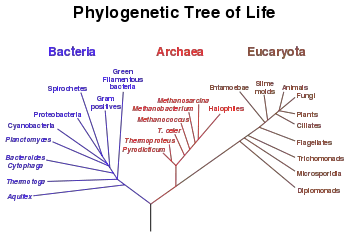
In biology, the theory of universal common descent proposes that all organisms on Earth are descended from a common ancestor or ancestral gene pool.
Evidence for common descent may be found in traits shared between all living organisms. In Darwin's day, the evidence of shared traits was based solely on visible observation of morphologic similarities, such as the fact that all birds have wings, even those which do not fly. Today, there is strong evidence from genetics that all organisms have a common ancestor. For example, every living cell makes use of nucleic acids as its genetic material, and uses the same twenty amino acids as the building blocks for proteins. The universality of these traits strongly suggests common ancestry.
The "Last Universal Ancestor" is the name given to the hypothetical single cellular organism or single cell that gave rise to all life on Earth 3.9 to 4.1 billion years ago; however, this hypothesis has since been challenged on many grounds. For example, it was once thought that the genetic code was universal. However, differences in the genetic code and differences in how each organism translates nucleic acid sequences into proteins have been found. Back in the early 1970s, evolutionary biologists thought that a given piece of DNA specified the same protein subunit in every living thing, and that the genetic code was thus universal. Since this is something unlikely to happen by chance, it was interpreted as evidence that every organism had inherited its genetic code from a single common ancestor, in other words, the "Last Universal Ancestor." In 1979, however, exceptions to the code were found in mitochondria, the tiny energy factories inside cells. Biologists subsequently found exceptions in bacteria and in the nuclei of algae and single-celled animals. It is now clear that the genetic code is nearly universal, yet not the same in all living things, and that it does not provide unequivocal evidence that all living things evolved on a single tree of life (Edwards 2001). Further challenge to the view of a "Last Universal Ancestor" has been provided over the years by Lateral gene transfer in both prokaryote and eukaryote single cell organisms. This is why phylogenetic trees cannot be rooted, why almost all phylogenetic trees have different branching structures, particularly near the base of the tree, and why many organisms have been found with codons and sections of their DNA sequence that are unrelated to any other species.
Information about the early development of life includes input from the fields of geology and planetary science. These sciences provide information about the history of the Earth and the changes produced by life. However, a great deal of information about the early Earth has been destroyed by geological processes over the course of time.
History of life
The chemical evolution from self-catalytic chemical reactions to life (see Origin of life) is not a part of biological evolution, but it is unclear at which point such increasingly complex sets of reactions became what we would consider, today, to be living organisms.
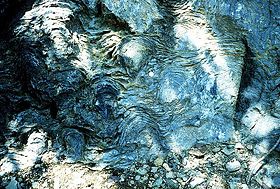
Not much is known about the earliest developments in life. However, all existing organisms share certain traits, including cellular structure and a nearly universal genetic code. The emergence of oxygenic photosynthesis (around three billion years ago) and the subsequent emergence of an oxygen-rich, non-reducing atmosphere can be traced through the formation of banded iron deposits, and later red beds of iron oxides. This was a necessary prerequisite for the development of aerobic cellular respiration, believed to have emerged around two billion years ago.
In the last billion years, simple multicellular plants and animals began to appear in the oceans. Soon after the emergence of the first animals, the Cambrian explosion (a period of unrivaled and remarkable, but brief, organismal diversity documented in the fossils found at the Burgess Shale) saw the creation of all the major body plans, or phyla, of modern animals. About 500 million years ago, plants and fungi colonized the land, and were soon followed by arthropods and other animals, leading to the development of land ecosystems with which we are familiar.
Fossil evidence indicates that the diversity and complexity of modern life has developed over much of the history of the earth. Geological evidence indicates that the Earth is approximately 4.6 billion years old.
Ecology
The ecosystem concept
The first principle of ecology is that each living organism has an ongoing and continual relationship with every other element that makes up its environment. An ecosystem can be defined as any situation where there is interaction between organisms and their environment.
The ecosystem is composed of two entities, the entirety of life, the biocoenosis, and the medium that life exists in the biotope. Within the ecosystem, species are connected and dependent upon one another in the food chain, and exchange energy and matter between themselves and with their environment.
The concept of an ecosystem can apply to units of variable size, such as a pond, a field, or a piece of deadwood. A unit of smaller size is called a microecosystem. For example, an ecosystem can be a stone and all the life under it. A mesoecosystem could be a forest, and a macroecosystem a whole ecoregion, with its drainage basin.
Ecosystems are often classified by reference to the biotopes concerned. The following ecosystems may be defined:
- As continental ecosystems, such as forest ecosystems, meadow ecosystems such as steppes or savannas), or agro-ecosystems
- As ecosystems of inland waters, such as lentic ecosystems such as lakes or ponds; or lotic ecosystems such as rivers
- As oceanic ecosystems
Another classification can be done by reference to its communities, such as in the case of an human ecosystem.
Spatial relationships and subdivisions of land
Ecosystems are not isolated from each other, but are interrelated. For example, water may circulate between ecosystems by the means of a river or ocean current. Water itself, as a liquid medium, even defines ecosystems. Some species, such as salmon or freshwater eels move between marine systems and fresh-water systems. These relationships between the ecosystems lead to the concept of a biome.
A biome is a homogeneous ecological formation that exists over a large region, such as tundra or steppes. The biosphere comprises all of the Earth's biomes—the entirety of places where life is possible—from the highest mountains to the depths of the oceans.
Biomes correspond rather well to subdivisions distributed along the latitudes, from the equator towards the poles, with differences based on to the physical environment (for example, oceans or mountain ranges) and to the climate. Their variation is generally related to the distribution of species according to their ability to tolerate temperature and/or dryness. For example, one may find photosynthetic algae only in the photic part of the ocean (where light penetrates), while conifers are mostly found in mountains.
Though this is a simplification of more complicated scheme, latitude and altitude approximate a good representation of the distribution of biodiversity within the biosphere. Very generally, the richness of biodiversity (as well for animal than plant species) is decreasing most rapidly near the equator (as in Brazil) and less rapidly as one approaches the poles.
The biosphere may also be divided into ecozone, which are very well defined today and primarily follow the continental borders. The ecozones are themselves divided into ecoregions, though there is not agreement on their limits.
Ecosystem productivity
In an ecosystem, the connections between species are generally related to food and their role in the food chain. There are three categories of organisms:
- Producers—usually plants which are capable of photosynthesis but could be other organisms such as bacteria around ocean vents that are capable of chemosynthesis.
- Consumers—animals, which can be primary consumers (herbivorous), or secondary or tertiary consumers (carnivorous).
- Decomposers—bacteria, mushrooms which degrade organic matter of all categories, and restore minerals to the environment.
These relations form sequences, in which each individual consumes the preceding one and is consumed by the one following, in what are called food chains or food network.
These concepts lead to the idea of biomass (the total living matter in a given place), of primary productivity (the increase in the mass of plants during a given time), and of secondary productivity (the living matter produced by consumers and the decomposers in a given time).
These two last ideas are key, since they make it possible to evaluate the load capacity: the number of organisms that can be supported by a given ecosystem. In any food network, the energy contained in the level of the producers is not completely transferred to the consumers. And the higher one goes up the chain, the more energy and resources is lost and consumed. Thus, from an energy point of view, it is more efficient for humans to be primary consumers (to subsist from vegetables, grains, legumes, fruit, cotton, etc.) than as secondary consumers (from eating herbivores, omnivores, or their products, such as milk, chickens, cattle, sheep, etc.) and still more so than as a tertiary consumer (from consuming carnivores, omnivores, or their products, such as fur, pigs, snakes, alligators, etc.).
The productivity of ecosystems is sometimes estimated by comparing three types of land-based ecosystems and the total of aquatic ecosystems:
- The forests (one-third of the Earth's land area) contain dense biomasses and are very productive. The total production of the world's forests corresponds to half of the primary production.
- Savannas, meadows, and marshes (one-third of the Earth's land area) contain less dense biomasses, but are productive. These ecosystems represent the major part of what humans depend on for food.
- Extreme ecosystems in the areas with more extreme climates—deserts and semi-deserts, tundra, alpine meadows, and steppes—(one-third of the Earth's land area) have very sparse biomasses and low productivity
- Finally, the marine and fresh water ecosystems (three-fourths of Earth's surface) contain very sparse biomasses (apart from the coastal zones).
Humanity's actions over the last few centuries have seriously reduced the amount of the Earth covered by forests (deforestation), and have increased agro-ecosystems (agriculture). In recent decades, an increase in the areas occupied by extreme ecosystems has occurred (desertification).
ReferencesISBN links support NWE through referral fees
- Alberts, B., et al. 2002. Molecular Biology of the Cell, 4th edition. New York, NY: Garland Science. ISBN 0815332181.
- Durrant, Michael (ed.). 1993. Aristotle's De Anima in Focus. London: Routledge. ISBN 0415053404.
- Edwards, M. 2001. PBS charged with "false claim" on "universal genetic code Science, TV Review, & Education Writers. Retrieved March 27, 2020.
- Gill S.R., et al. 2006. Metagenomic analysis of the human distal gut microbiome Science 312: 1355-1359. Retrieved March 27, 2020.
- Luria, S. E., S. J. Gould, and S. Singer. 1981. A View of Life. Menlo Park, CA: Benjamin/Cummings Pub. Co. ISBN 0805366482.
- Margulis L., and D. Sagan. 1986. Microcosmos. New York: Summit Books. ISBN 0671441698.
- Margulis, L., and D. Sagan. 1995. What Is Life? Simon & Schuster. ISBN 0684810875.
- Schrodinger, E. 1944/2000. What is Life?. Cambridge University Press. ISBN 0521427088
- Southwick, E. E. 1983. The honey bee cluster as a homeothermic superorganism. Comparative Biochemistry and Physiology 75A(4): 741–745.
- Towle, A. 1989. Modern Biology. Austin, TX: Holt, Rinehart and Winston. ISBN 0030139198
External links
All links retrieved November 17, 2022.
- Redefining "Life as We Know it" SpaceRef.com, May 04, 2001.
- Cell evolution puzzle BBCNews, June 20, 2003,
- Species 2000 Species 2000 has the objective of enumerating all known species of plants, animals, fungi and microbes on Earth as the baseline dataset for studies of global biodiversity. It will also provide a simple access point enabling users to link from here to other data systems for all groups of organisms, using direct species-links.
- Humungous fungus: world's largest organism?
- The Tree of Life
| |||||
Credits
New World Encyclopedia writers and editors rewrote and completed the Wikipedia article in accordance with New World Encyclopedia standards. This article abides by terms of the Creative Commons CC-by-sa 3.0 License (CC-by-sa), which may be used and disseminated with proper attribution. Credit is due under the terms of this license that can reference both the New World Encyclopedia contributors and the selfless volunteer contributors of the Wikimedia Foundation. To cite this article click here for a list of acceptable citing formats.The history of earlier contributions by wikipedians is accessible to researchers here:
The history of this article since it was imported to New World Encyclopedia:
Note: Some restrictions may apply to use of individual images which are separately licensed.

